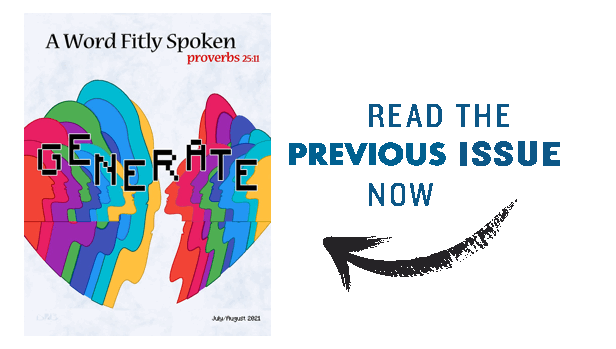
BURNING OUT: THE SILENT CRISIS SPREADING AMONG WILDLAND FIREFIGHTERS
DALIAH SINGER
The 20,000 wildfire fighters risking their lives across the US are also jeopardizing their mental health. Who’s there to help them once they emerge, ash-covered and scarred in ways even they can’t see?
Llew had never been so certain of his imminent death.
It was going to hurt.
The wildfire in central Washington had already bested the firefighting crews that morning, forcing everyone to retreat to safety zones. Then Llew found himself in the passenger seat of an SUV at the exact wrong moment.
He and another wildland firefighter were scouting the fire’s movement when the wind changed. The driver had maneuvered them downhill, out of the black – a safer, already burned zone – and into a patch of fresh fuel. Ponderosa pine, brush and grass were igniting all around them. The 6ft-tall wall of flanking fire on their right suddenly blew up into a 100ft-high conflagration which overran their main escape route. The air blew through the open windows with so much strength that loose papers in the backseat were sent flying around the car.
Those who’ve been close to wildfires often describe the sound as a barreling freight train, or TV static turned up to maximum volume. It reminded Llew of a tornado.
“It’s hard to explain the sound trees make when they torch, much less a half-mile of them in a line in front of you,” he says. “It’s deafening. It feels like it’s walking up on you.”
In his 16 years as a wildland firefighter, Llew, who requested to use his nickname in this story, had experienced his fair share of near misses. There was the helicopter that caught fire while he was on board, the untold number of tumbling boulders he’d sidestepped just in time, and the recurring confrontations with loss and devastation: blackened teddy bears, melted photo albums, dreams reduced to ashes. But he’d never felt as close to death as he did on that hot July day in 2013.
Time became imprecise amid the urgency of survival. Spot fires were coalescing, closing in around them. Llew can’t be sure of how long the pair were in real danger. He wavered between anger – at himself for getting into this situation – and sadness, for what his family, his son, would have to endure.
At some point – it could have been 10 minutes later, maybe 30 – the deafening crack of flames retreated as the pair located a new route out amid the heavy gray smoke and separated themselves from the growing blaze.
Llew let out a deep breath. He didn’t know it yet, but a delicate mental balance had tipped. He would spend six more years working for the United States Forest Service, but he’d never again be the same firefighter.
Close calls were ‘a rite of passage’
Llew was five years old when he saw his first wildfire, and he never outgrew the allure of fighting them on the frontlines. He was hypnotized by the power he witnessed as “Mother Nature threw down her best”, the adrenaline that came with digging a fire line or wielding a chainsaw, and the solidarity that developed among his crew each season. But after the near entrapment, he began to struggle to do the job he’d loved for so long.
Insomnia became his unwelcome bedfellow. On fire assignments, he’d lie awake all night after sweating through 16-hour shifts, sometimes for five nights in a row, and then get up and go back to sawing trees or leading crews. He once admitted himself to an emergency room at 2am, begging the doctors for help falling asleep.

Driving near cliffs, even on passes he was familiar with, began to induce panic attacks that felt like heart attacks. He’d freeze, become dizzy and develop vertigo. “Like I was going to run off the road and die,” Llew, now 45, says. “I couldn’t push the brake hard enough.”
Llew had fought fires in 36 states and worked on five different national forests, but the confidence slowly built over that time soon morphed into apprehension. He grew more hesitant and risk averse. Where he used to find excitement, he felt anxiety. “It was hard to find joy in general,” he says of his mindset at that time. “You make it about what you can’t do. It’s hard for that not to start to become your own internal personal identity. It’s exhausting.”
During fire briefings, he’d subtly breathe in through his nose and out through his mouth to hide panic attacks as hot waves seized his body; he called it “panic with a straight face”. He was ashamed of these reactions. How could he be trusted to lead his team into the flames when he couldn’t even control his own body, his own fear?
“The first decade of my career, nobody ever talked about stress, nobody ever talked about trauma, nobody ever talked about close calls affecting you. It was just a rite of passage,” he says. “When I came home, I was kind of made to feel like I fucked up. Like I deserved it somehow.”
Llew was finally diagnosed with chronic post-traumatic stress disorder (PTSD) and panic disorder in 2017. He continued fighting fires.
Witnesses to human suffering and lost landscapes
Fire seasons are now, on average, 78 days longer than they were in 1970, causing additional exposure to stress and trauma for the thousands of wildland firefighters working across the country. In many parts of the west, warmer temperatures, severe droughts, historic fire suppression, poor forest management and a growing number of people living in the wildland-urban interface have created an unsustainable crisis.
In 2020 alone, Colorado experienced its three largest wildfires in state history, and more than 4m acres (16,000 sq km) burned in California, where the August Complex fire was named the state’s largest ever. This year is on pace to be even more destructive.
Fighting wildfires is a physically exhausting and risky job that requires extended time away from home and regular confrontations with hazardous situations. It’s also not particularly well compensated: entry-level federal wildland firefighters earn a base pay below $14 an hour. In comparison, the same job with the California department of forestry and fire protection nets around $26 per hour. (In general, municipal and state firefighting agencies tend to pay better and offer more robust behavioral health services.)
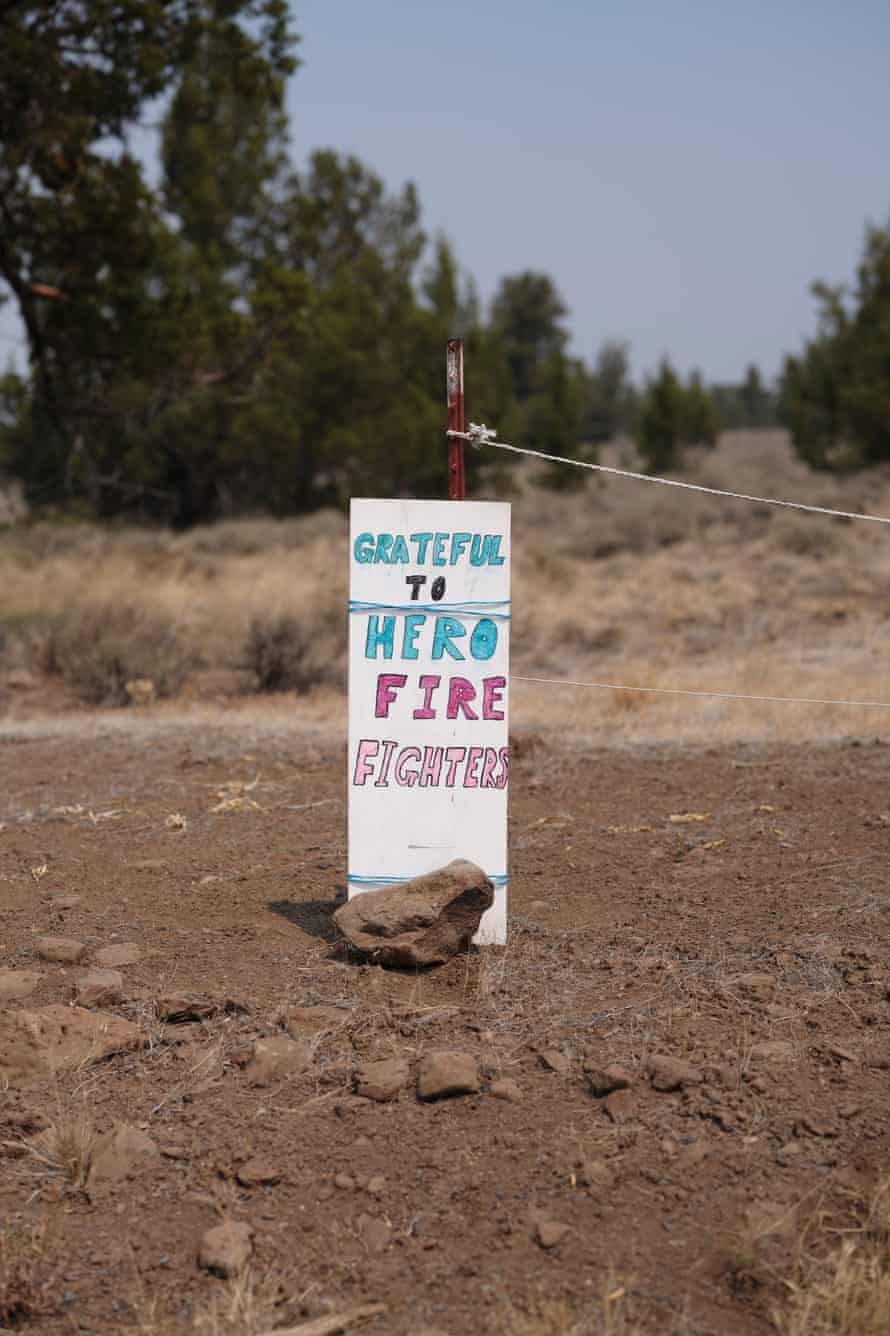
Many wildland firefighters are seasonally employed, working for six or so months a year. Depending on their positions, they may work 16 hours a day, up to 14 days at a time, with two mandatory days off between “rolls” (their term for those two-week shifts). Sometimes, calls come in so quickly that firefighters don’t have time to kiss their spouses or children goodbye. Sometimes they fight fires – and watch houses burn – in their own communities.
These firefighters rely on 1,000 hours or more of overtime and hazard pay to cover their bills throughout the year. Some sleep in their cars during the season because housing is too expensive in the areas where they work. In June, Joe Biden called firefighter pay “unacceptable”. His comment was part of an announcement that some federal firefighters would receive temporary pay raises to at least $15 an hour this year.
The steady accumulation of mental strains – financial stress, a demanding work environment, isolation from loved ones and the pressure to manage public expectations – creates the perfect storm for mental health problems to emerge.
“The more traumas that you have layered on top of each other, the more likely that you will develop PTSD or depression,” says Dr Angie Moreland-Johnson, a clinical psychologist and co-director of the Center for Firefighter Behavioral Health in Charleston. “Wildland firefighters are seeing close calls and really scary situations, so if they’re having those layer on top of each other, then that risk for mental health concerns just keeps doubling.”
Wildland firefighters are at elevated risk for depression, alcohol use disorder, sleep deprivation, post-traumatic stress and suicide. Peer-reviewed data focused on this specialized group is limited, but there is ample research on first responder mental health, some of which shows they contemplate and attempt suicide at a rate more than 10 times greater than the general public. Firefighters, specifically, report higher rates of suicidal ideation, planning and attempts than even military personnel, and it’s more common for firefighters to die by suicide than in the line of duty.
“The exposure to human suffering in the last three years is not something you’d see at a typical day of work at firefighting – entire communities destroyed, loss of human life, loss of wildlife, loss of the landscape that we treasure. That’s not what wildland firefighters signed up to do, but it’s what they’re exposed to,” says Nelda St Clair, who worked in wildland fire for 40 years and is now the national critical incident stress management program manager for the Bureau of Indian Affairs (BIA).
Mental struggles can become more acute in the offseason, when firefighters lose their connections to their crews and transition from rigorous schedules to quieter lives.
“[Wildland firefighters] have more risk than the average firefighter because of social disconnection,” says Thomas Joiner, a psychology professor at Florida State University and one of the country’s foremost experts on suicide. A recent study by his team included a sample of wildland firefighters – just 20 individuals – and found that 55% of them reported clinically significant suicidal symptoms compared with 32% of non-wildland firefighters.
Dr Patricia O’Brien, a clinical psychologist and former hotshot – an intensely trained firefighter working directly on fire lines – expanded those results with a survey of more than 2,500 current and former wildland firefighters. Her early data , which is not yet peer-reviewed or published, shows that rates of self-reported probable depression, generalized anxiety disorder and PTSD, as well as past-year suicidal ideation, past-month binge drinking, heavy alcohol use and smokeless tobacco use were all two to 10 times more prevalent among wildland firefighters than the general public.
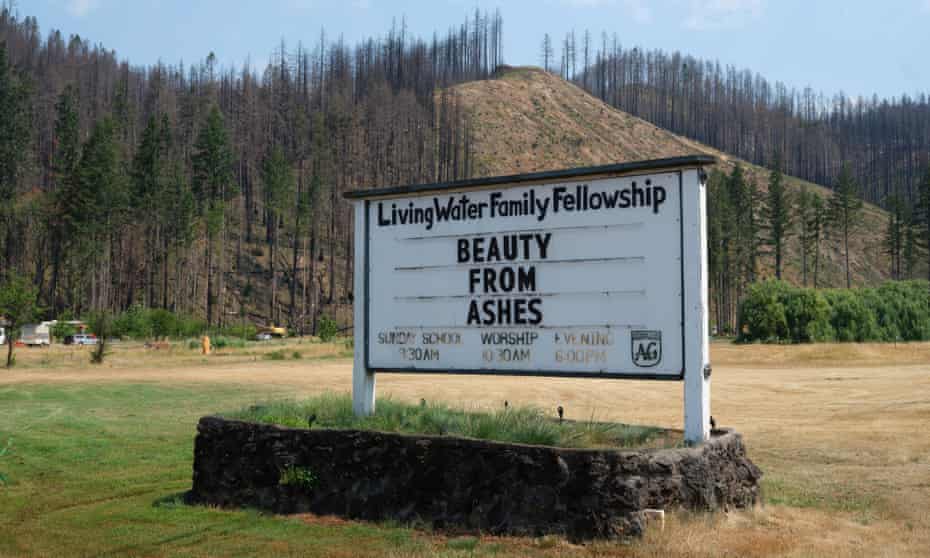
“There have not been historically programs or resources to give support to people, particularly after accidents or unintended outcomes that may impact them,” O’Brien says. “As fire seasons and the demands on firefighters get more intense, I think it’s more and more important to acknowledge this stuff. I hope that we can start to really use good research, evidence-based programs and program development to start to meet people’s needs better.”
There are more than 20,000 wildland firefighters in the US, spread between federal land management agencies, state and municipal departments and private entitiesas well as crews composed of inmates. That’s thousands of individuals like Llew who risk their lives – and their psychological health – season after season. Who’s there to help them when they emerge, ash-covered and scarred in ways even they can’t see?
Suicide rates rising, and not enough mental health help
Ask any firefighter, and they’ll list two inevitabilities of their chosen profession: work it long enough and you’ll have your fair share of close calls, and you’ll know someone who’s been killed on the job.
Llew was out of town when his best friend Jonathan – whose name has been changed to protect his family’s privacy – called to say he was struggling and needed help. Llew spent three days ringing every counselor for 200 square miles around Jonathan’s rural Washington home and couldn’t find anyone to speak to his friend beyond a crisis hotline that he declined to use. The Employee Assistance Program (a confidential counseling service provided to all federal fire employees) had just one counselor in the area, who was unavailable.
Llew sent local friends to do wellness checks, terrified of what they would find. The strong bonds between members of a fire family can be a protective factor when it comes to mental health, but it’s not always enough.
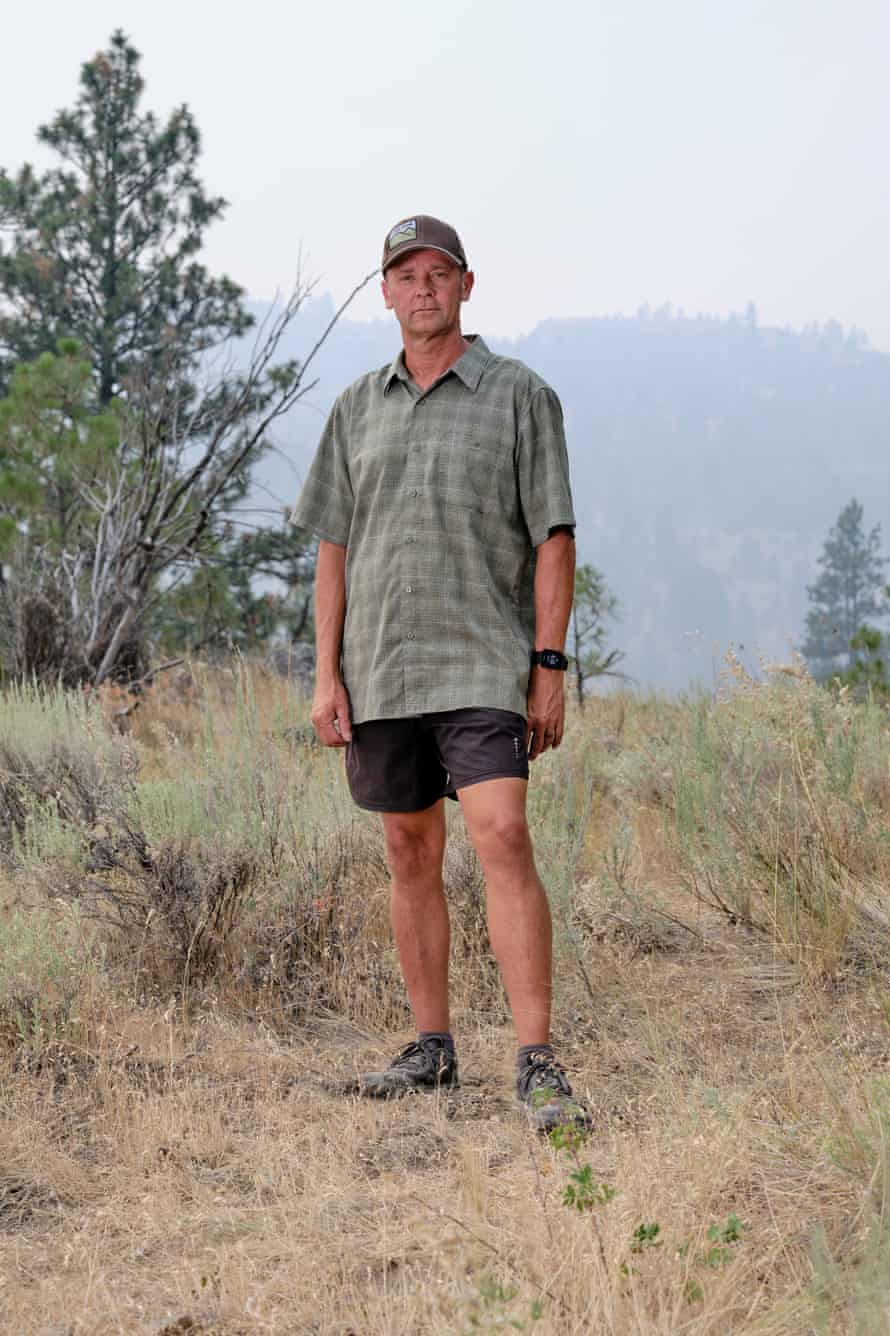
“I really thought that he was going to hang in there, and he was going to see the temporariness of his situation,” Llew says. “I never really expected my best friend in the whole wide world to shoot himself.”
Jonathan died by suicide in early 2019, leaving behind a one-year-old son.
The Employee Assistance Program (EAP) is one of the primary mental health resources available to federal wildland firefighters, but those who have accessed it say it’s geared toward marriage, family or financial counseling and doesn’t have enough trauma-informed clinicians with firefighting knowledge to adeptly address long-term mental health struggles. EAP support is particularly thin in the rural west, where behavioral health resources are already in short supply. (Telehealth additions as a result of the pandemic have helped in some cases.)
Fortunately, there are improvements on the horizon. New EAP contractors are being added in some regions, with a requirement that they include trauma-trained clinicians. And last winter, the agency opened its program to seasonal employees in the offseason; they had previously been unable to connect while laid off for half of the year.
More is needed. Shawna Legarza, the former director of fire and aviation for the USFS, lost her firefighter husband to suicide in 2008. When she returned to work after his death, the stigma weighed heavy; Legarza avoided eye contact with many of her colleagues, and they did the same. She wasn’t comfortable contacting the EAP and realized others must be similarly struggling.
She decided to pursue a PhD in psychology and helped introduce some of the first federal suicide awareness and prevention programs to connect firefighters to mental health clinicians – efforts she still promotes today.
She says the needs are dire, and numbers support her concerns. St Clair, the retired firefighter who now works for the BIA, started unofficially tracking wildland fire suicides around 2010. She tallied 52 suicides between 2013 and 2018 and says the number is ticking slightly upward again after a few years of decline.
In response, advocates are working to develop a referral service that connects wildland fire personnel with culturally competent mental health providers – clinicians with first responder backgrounds who intimately understand the job.
Getting new training and support for boots on the ground
It was 7 July 1994. The day before, 14 firefighters had died in the South Canyon fire near Glenwood Springs, Colorado, and the clinician who showed up to counsel firefighters in the aftermath stuck out like the one green tree in a sea of black.
When the counselor walked into the room to lead a critical incident stress debriefing, he was dressed in a three-piece suit, complete with shiny black shoes. It was clear he didn’t understand his audience. How could someone who had no experience in this terrain possibly relate to what the survivors had endured?
All of them stood up and left, remembers Kimberly Lightley, a Prineville hotshot who was 23 years old at the time. She had just lost nine of her crewmates. “It was not the environment that would promote healing,” she says today.
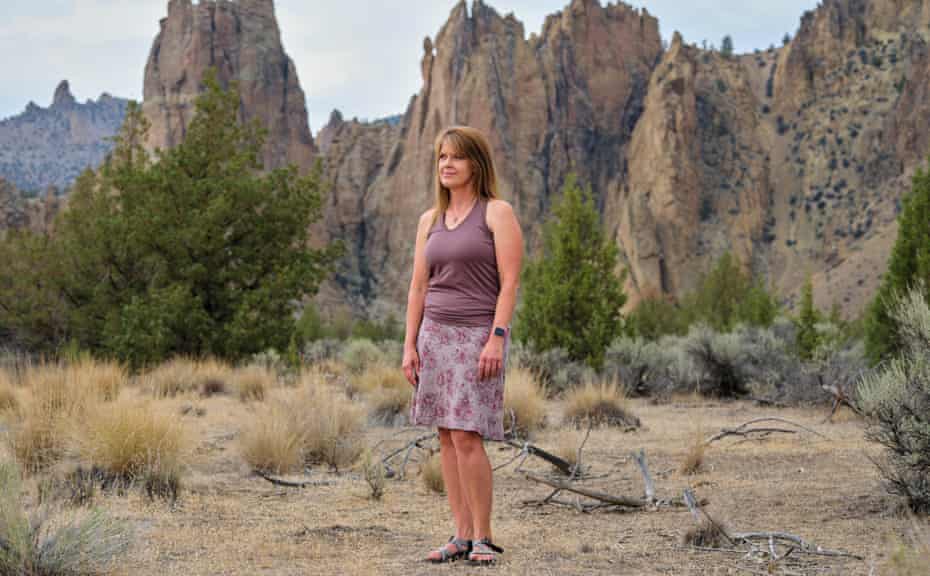
Lightley didn’t just walk out the door; she soon left the USFS entirely. She found a new job as a pharmaceutical research chemist, but she couldn’t escape the memories of that terrible day. More than a decade after the fire, she started to have nightmares and flashbacks. She carried the weight of survivor’s guilt, an oppressive shame that overshadowed any moments of happiness or laughter. She couldn’t move on; she’d frozen on the mountain that day, stuck in place as the fire crested the ridge, and she’d never allowed herself to thaw.
She eventually contacted a trauma clinician who diagnosed her with PTSD and helped her address her crippling grief. In 2007, she began sharing her story within the fire service; she now works as a risk management program specialist for fire and aviation management in the USFS’s Washington office.
To better prepare firefighters for the realities of their job, Lightley, in conjunction with Dr Patricia Watson of the National Center for PTSD, adapted a military stress first aid program. It’s a set of tools that help crews and individuals assess stress levels – on a continuum from green (ready) to red (ill) – and outlines effective responses such as empathic listening.
In addition, the critical incident stress management (CISM) teams the federal agencies task with responding to serious injuries, accidents or line-of-duty deaths today are more often equipped with peer supporters – colleagues who work in similar roles and are trained to recognize behavioral health problems. The Bureau of Land Management has also, for the past three years, organized conversations with all 3,000-plus of their wildland firefighters before the season ramps up; it is testing a postseason version this year in Utah.
These focused initiatives are all relatively recent, and the variety is critical. Fire personnel at all levels say they have already seen positive effects, but none of these efforts are compulsory. It’s very much up to leadership or the firefighters themselves to buy in and request trainings, encourage participation and normalize talking about mental health. “Getting that information to boots on the ground, it can be arduous,” says Lightley.
Having consistent messaging dispensed through mandatory programs could go a long way, some say. As could a more robust peer support network and an influx of federal funding – all of which are increasingly difficult in the face of tightening budgets.
PTSD, and the perpetual offseason of retirement
Suicidal thoughts began creeping into Llew’s mind around the time he was diagnosed with PTSD, but they grew the most intense after he officially walked away from his job.
“I was pretty close [to suicide] for a long time. I was really struggling hard with my symptoms and loss of my career and loss of people I thought were my family and friends and colleagues, all of those things,” Llew says, choking up. “The inability to find joy in your day when there’s just nothing you can look forward to, and all the things you used to love to do, you don’t have the energy to want to go do, it’s hard to imagine suffering for 40 more years.”
His best friend’s death saved his life. “You just don’t feel like doing it, I guess, after that.”
Weeks after Jonathan’s suicide, in May 2019, Llew officially applied for disability retirement for chronic PTSD. It took seven months to be approved. (In general, sources say it’s “extremely difficult” for mental health injuries to qualify for any sort of worker’s compensation; Llew’s timeline was much faster than most.) Llew has to wait 17 years – 12 years longer than if he’d finished out the required 25 years of service – to receive his full retirement. For now, his disability qualifies him for just 40% of what he’ll eventually receive.
“We spend millions of dollars every year running toward trauma, and we spend very little effort or money treating it and taking care of the people we ultimately ask to make these enormous sacrifices,” Llew says.
At the federal level, firefighters are classified as forestry technicians, a slight that many say makes them feel overlooked and dispensable, though they regularly risk their lives for the job. A bill to reclassify them as wildland firefighters was brought forward in the House of Representatives last September; similar legislation has been introduced over the years but has consistently failed.
“We need better pay and accurate classification,” says wildland firefighter Ben McLane, “so we can build up a team of people that has the bandwidth to address these other problems, like mental health.”
Today, Llew is living in a perpetual offseason. His world has shrunk to his immediate surroundings. The firefighter who once regularly rode in helicopters struggles even to imagine boarding a plane to see his family. The adventurous outdoorsman who skied 80 days a year is now so unnerved by heights that he can’t sit on a chairlift. His brain spirals and his breath quickens on certain backcountry roads – the places he used to feel most himself.
“Your world just gets smaller and smaller and becomes more and more about where you can’t go and what you can’t do,” he says. “It gets really hard to have anything to look forward to … It’s hard to not dwell on the things you aren’t or that you no longer feel like you are.”
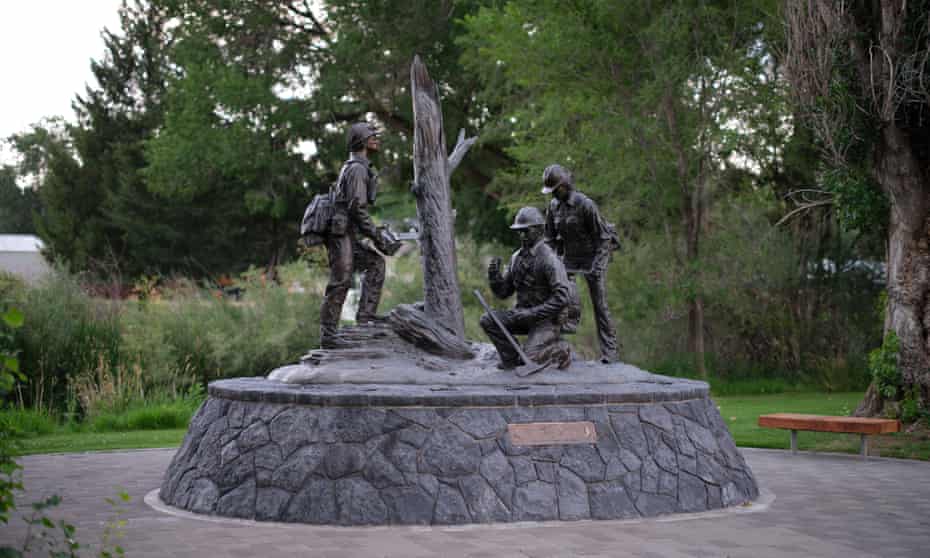
On the fire line, you don’t quit because you’re tired. You quit when you’re done. Quitting has never been something Llew is good at. With help from a therapist, medication, EMDR (eye movement desensitization and reprocessing, a psychotherapy designed to help process trauma), and his own force of will, he’s expanding the boundaries imposed by his PTSD.
“I’m trying to make those things less scary and less limiting. I’m trying to make my world a little bigger every day by pushing my sense of uncomfortableness,” Llew says.
He’s forcing himself to drive those anxiety-inducing roads and trying to ignore the little hairs that stand up on the back of his neck when a hot, dry wind kicks up – a sign of fire weather. He runs 40 miles a week to keep his head clear, and he built a deck where he can do yoga and meditate.
“Being removed from that job has helped a lot,” Llew says. “I couldn’t be more grateful for the shift in thinking that lends itself to not hating myself for not being able to continue my career,” he says. “I actually feel like myself again in some ways.”
Like many current and retired firefighters, the job remains something Llew speaks of with reverence. The physicality and complexity of it. How it stretched his brain. The sense of accomplishment when his brothers and sisters saved homes and landscapes. The beauty of standing atop a mountain and watching the sun set amid the smoke.
The feeling, after a 16-hour shift, that you were just more capable than other humans.
Firefighting once consumed his whole identity. Now it’s just one branch of his story. Instead of being angry or self-loathing, over time he’s come to understand his PTSD as akin to a physical injury, an on-the-job wound that will take time to heal. Telling his story publicly for the first time is part of his process.
He wants people to understand that he was, in his words, an “average Joe” firefighter who went to work and did his best to keep everyone safe. Then the wind shifted, and he had no control over what came next.

